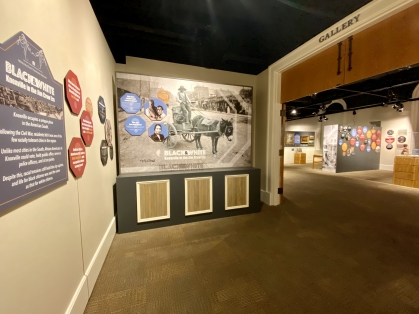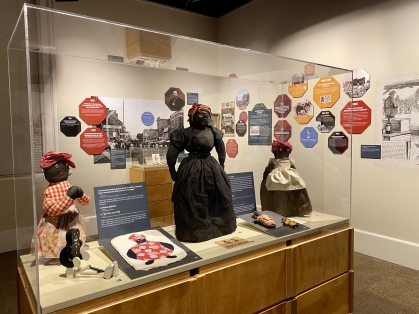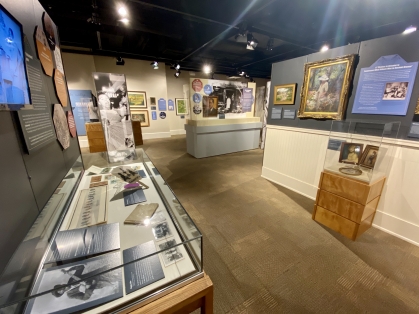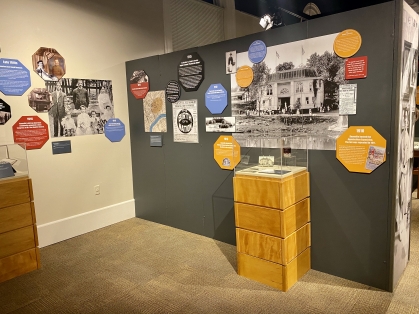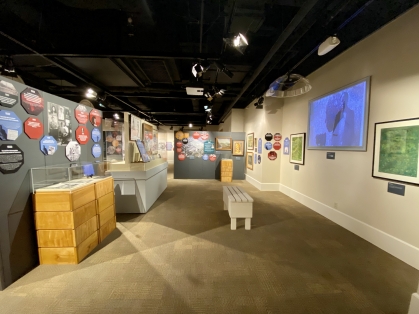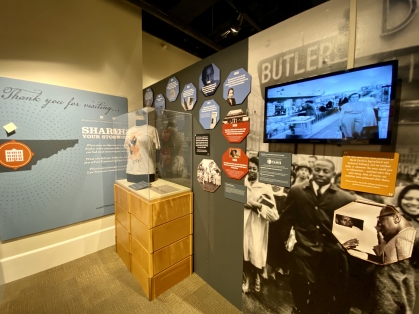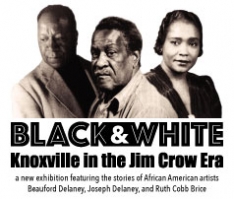
|
Second Floor Hours
865-215-8824, eths@eastTNhistory.org |
First Floor Hours
865-215-8830 |
Third Floor Hours
865-215-8801 |
Second Floor Hours
865-215-8800 |

Black & White: Knoxville in the Jim Crow Era
Introduction
Knoxville occupies a unique place in the American South. Following the Civil War, residents felt it was one of the few racially tolerant cities in the region. Unlike most cities in the South, African Americans in Knoxville could vote, hold public office, serve as police officers, and sit on juries. Despite this, racial tensions still held the city captive, and life for black citizens was not the same as that for white citizens.
What was life like for African Americans in Knoxville during the Jim Crow era?
What influence did the city have in the early lives of artists Beauford and Joseph Delaney?
Could an African American artist, such as Ruth Cobb Brice, gain recognition without leaving home?
This exhibition, presented as a timeline, provides historical context to these questions beginning with Reconstruction and continuing through the height of segregation during the Jim Crow era.
Who were Beauford and Joseph Delaney?
Brothers Beauford and Joseph Delaney were internationally known artists whose works are now part of some of the world's most prestigious collections. The Delaneys were born in Knoxville in the aftermath of slavery and the Civil War. Their education was often informal and sporadic, as they attended one rural school after another while traveling with their circuit-riding preacher father. They grew up amidst racial segregation, witnessed the upheaval of Knoxville’s race riot in 1919, and were aware of the lynching of blacks throughout the South. They were part of the Great Migration, during which thousands of African Americans left the South looking for opportunities.
Beauford and Joseph took different paths, yet their paintings reflect the world they experienced, beginning with life in Knoxville.
Who was Ruth Cobb Brice?
Ruth Cobb Brice was a Knoxville-born educator, writer, and artist contemporary with Beauford and Joseph Delaney. Like the Delaneys, Brice grew up amidst racial segregation. But unlike them, Brice worked from Knoxville.
Even without the direct influence of large art centers, Brice’s paintings and poems gained national notoriety.





